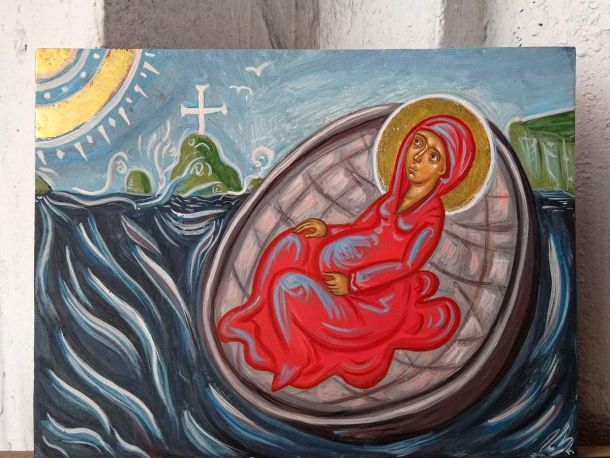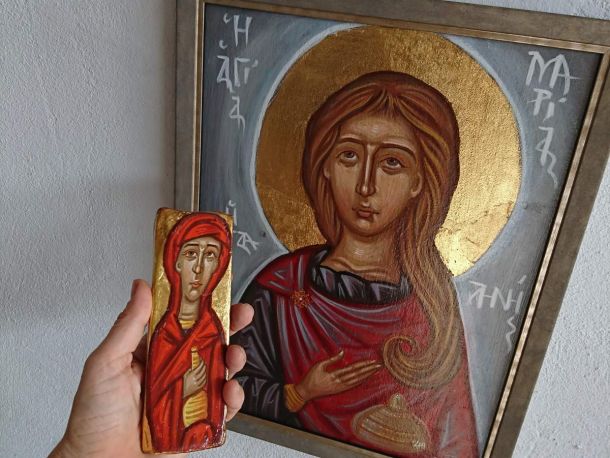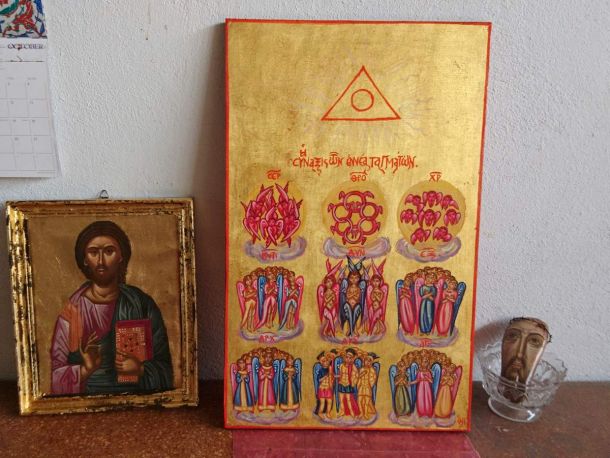Writing or painting icons?

Writing or painting icons? This is just an opinion and a spoiler for the beginning : Writers write, but painters -who are not that articulate (in fact most of us have a problem expressing ourselves verbally and that is why we resorted in painting in the first place) paint.
The whole story of “writing” started from the exact translation of the word used for painting icons in Russian language , and its been there with us ever since.
I can understand that people are using the expression “write icons’ in order to add some value. Writing adds an additional “weight” to the process of painting religious figures,and creating images of liturgical use. But it sometimes gives a somehow inaccurate picture of what an icon painter is. Moreover an Icon painter has to undergo extensive training in drawing, and rendering volume and figures, using light and shadows , to study colors and mediums and surfaces as all painters do. Furthermore he/she has got to study the historic context, tradition, representations, theological terms and concepts of the themes he/she is working on.
Another word for painting icons in my native language, Greek, is “historein” which means, telling the history, narrating a story, and that is very “poetic” ‘but still it is done in pictures.
No wonder some of the most remarkable painters of the Cretan school of iconography, when signing their work , they were using the amendment in Latin “pinxit [like the signature in the attached image “Angelus pinxit”- Angelos has painted it), So in my most humble opinion: We paint icons.
- The signature comes from a work attributed to Angelos Akotantos (source Wikipedia)
- The image is from the painting found in Bruck Auctions: https://brunkauctions.com/masterpieces/





